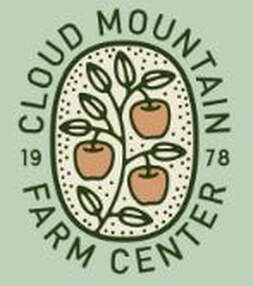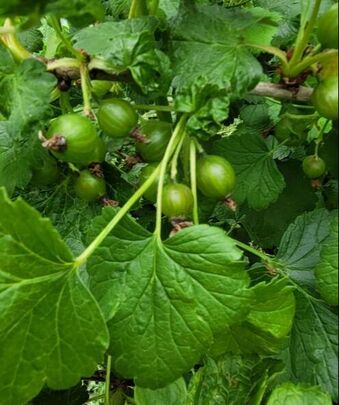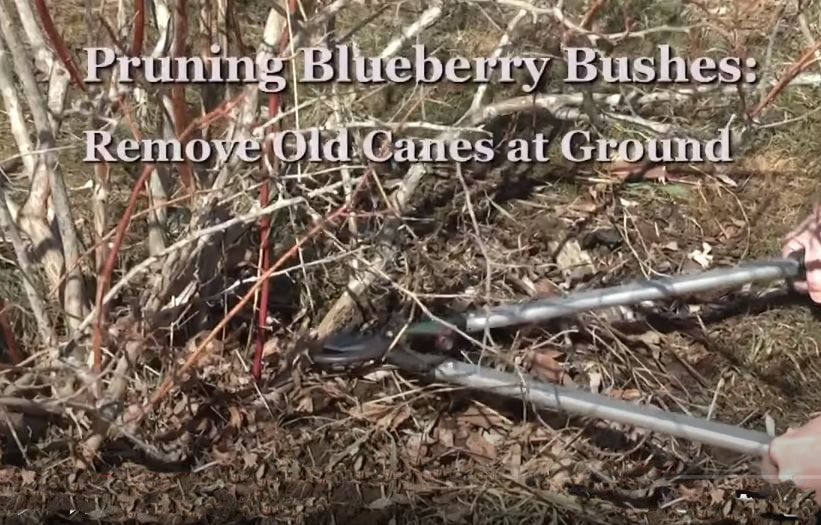Bountiful Landscapes & ConsultingTransforming People & Places to Create Vibrant Health & Beautiful Outdoor Spaces
|
Planting, harvesting, and scapes.One of the questions I hear the most..... "Is it too late to plant my garlic?" insert a bunch of laughing emojis here! We ARE garlic lovers!! :) Now, we can get quite technical about what/how/when - and there are definitely times for that. But, I want to encourage more people to grow the food that they love! So, here are a few tips on growing garlic for the novice gardener: 1. Use ONLY organic garlic. You can buy the bulbs from a nursery or from your high-quality grocer, but make sure the bulbs are tight and hard, ie. fresh. If you use grocery store garlic, the grown bulbs may not get as big. 2. Know the two basic kinds - hardneck and softneck. If you like the garlic you usually get at the store, that's probably softneck. It's not cold-hardy, but you can easily grow it in your yard. It has a mild flavor. Hardneck varieties are cold-hardy, and they produce tall twirly scapes that you can harvest in the late spring while the bulb matures. The scapes are great to use in a stirfry, and the bulb flavor is much more bold.
0 Comments
 Many people don't want to plant flowers in their fruit orchards. And the trees suffer. I recently saw what could be a lovely orchard out at a country estate. A beautiful, but small orchard, and not a flower in sight. My question: "During the few days that any tree is in full bloom waiting to be pollinated, how do you think the bees will find it?" THINK ABOUT IT
Spur fruit, such as apples and pears are frequently grafted to provide several varieties on one tree. This is beneficial because two different varieties are needed for successful pollination. An apple and a pear, two different apples, or two differnt pears are examples. This tree has two different varieties of apples on one tree - so this works! The bees can find both varieties easily!! Many nurseries sell these multi-variety trees, which are grafted onto a "root stock" adapted to a specific location, such as Western Washington, where the climate is wet and more prone to disease and pests. It is important to pay attention to this adaptation because some less resilient trees and shrubs will attract disease and pests more easily, and spread them quickly to surrounding plants in your orchard and your neighbors. Orchard trees take a lot of care, and can produce abundantly for years! Please take care of them, and our local bee populations as well!
A Permaculture approach to design.Step 1 - Draw a simple map of the elements affecting your yard. Here's an example: Step 2 - Identify potential planting areas for flowers & veggies - they can be integrated together!! Step 3 - Note the location & type of trees, shrubs and other plants you have in your yard that come back year after year. Review the different Layers of a landscape to help with planning. REMEMBER to FILL the planting beds to help retain water!! Then, add in unique landscape features to suit your personality! Have fun with different design ideas. Ask yourself, do you like a "tidy" or "messy" style? Enjoy watching it all grow!!!
Blueberries in an Edible Landscape!What a fun addition these are to any garden or yard! Easy to grow and a handy snack!!
Fertilizing Also Helps. Spring Care:
BEFORE AFTER Pruning Tips:
You can grow Blueberries in a pot!
Swap, Buy & HarvestSeed Options Three main types of seeds are available to gardeners.
Open-pollinated means that the plant flowers are fertilized by bees, moths, birds , bats, and even by the wind and rain. The seed harvested from these plants produce the same plant the next year. Some variances can occur if the plant is cross-pollinated by a different variety nearby, but this also adds to genetic diversity. More diverse plant populations can adapt to local growing conditions and changes in climate year-to-year. Heirloom seeds have a documented history of being passed down from generation to generation in a family, community or tribe, that have not been cross-pollinated. The plants grown may need a little extra care, but are said to produce more flavorful and more nutritious food. Heirloom tomatoes are especially popular because of their deep rich flavor, and the seeds can also be saved to plant more of the same for the next season! Why Organic?? The simple answer is that synthetic pesticides, herbicides and fertilizers, that are used on crops, including crops for seed, are unhealthy to consume. These chemicals cause illness, and are linked to many illnesses, cognitive degeneration, learning disabilities, memory loss and cancers. When crops are treated with these toxins, the food we eat also contains them. So, I vote Organic. The "Organic" designation requires more government oversight relating to certification and growing standards, transportation, and production facilities. The increase in the cost of this "cleaner" produce is a small price to pay for the commitment by smaller farms and farmers, who believe that food grown in it's natural form and habitat provide our bodies and our families the best possible nutrition. And I stand for these practices.  Biodiversity is the perfect balance. Crop health & production improve exponentially in a biodiverse environment. This is why monocrops grown from hybrid seeds require so much synthetic fertilizer. All the nutrients & biodiversity are gone. See this AMAZING example of the benefits of biodiversity on the barren landscape of the Dead Sea www.youtube.com/watch?v=goBB4fVLRxc Ecosystems are biodiverse communities that include all the different kinds of life you'll find in one area. These species interact and create an ever-expanding energy storage system that form an intricate web, to maintain balance and support all life. Becoming a seasoned & intuitive gardener takes years of experience....True. However, anyone can be a successful gardener, if you are committed to it. In the beginning, you can gain experience and success by keeping your vision small. TRUST ME ON THIS!! Start with a 3x3x3 method. Plant 3 hearty vegetables that you like, 3 perennial flowers, and 3 ground covers. This is everything you will need to start building a sustainable and resilient landscape.
What's your soil type?  An experienced gardener can go crazy trying to get the *perfect* soil mix for their gardens. From making your own compost to buying the ideal mix, one can spend either an abundance of time, or a whole lot of money. And if you're dedicated to growing food, you really need to have soil that works for vegetables. This quick field test will help you determine your soil type. Knowing this is imperative, as it gives you information on your soil's water holding & draining capabilities.  Do I make my own compost? YES But if you're just beginning, skip it. What you're looking for is well draining, rich in nutrients, and fluffy. I suggest a triple mix - and here's how I make it. 1/3 - Your regular ground soil, whatever it is. It's best to screen it to remove all weeds. 1/3 - Organic potting soil. This usually contains a small amount of slow-release fertilizer. 1/3 - Organic compost. I find the bagged version is cleaner than in bulk, but I'll let you decide. I mix this altogether in a wheelbarrow (in batches) and use it as I plant. If you decide to get bulk "garden soil" for your beds, BEWARE. As you look at the choices, make sure to scoop some up to make sure it has the feel you want, plus the right combination of the 3 elements from above! Happy Gardening! Are you washing your food? I used to eat leafy greens right out of the garden. Carrots too, after I washed them off with the hose. But in the last few years, since I have been working with, and in, a lot more gardens, I've started looking at the plants a lot more closely - as I teach others to do. After all, observation is the first thing to do when working with any landscape. When labels say "Organic" I believe there is an assumption that the produce is clean because, after all, it's grown without chemicals, right? The arguments here can vary greatly, but the bottom line is that we all want the fruit and vegetables we eat to be free of bugs, dirt, chemicals and bacteria, period. This Fruit & Vegetable Rinse, made from corn & coconut, is hands-down the best food cleaner I have ever used. It's edible, so you don't have to wash it off, and it's safe for kids & pets. It extends the shelf-life of your produce, and kills 'bugs' inside your body; I used it when I got food poisoning and was better in 15 minutes! It kills aphids on plants, and fleas on pets too. Read about it for yourself. Fruit & Vegetable Rinse
Whatever you do, DO SOMETHING to clean your food, counters, car and house. Do it for Health, and for Peace of mind <3 |
|









































